#3D stacked memory
Explore tagged Tumblr posts
Text
Micron samples 12-layer 36GB HBM4 memory to major customers
June 17, 2025 /SemiMedia/ — Micron Technology has begun sampling its 12-layer 36GB HBM4 (High Bandwidth Memory) to major customers, the company announced on June 12. Built on its 1-beta DRAM process node, the new HBM4 integrates an advanced 12-high stack design and an embedded memory built-in self-test (MBIST) feature to support next-generation AI workloads. As demand for generative AI…
#3D stacked memory#AI memory solutions#DRAM packaging#electronic components news#Electronic components supplier#Electronic parts supplier#generative AI chips#high bandwidth memory#Micron HBM4#semiconductor news
0 notes
Text
applied fork theory:
So a constant, irritating drain on my energy has been an artifact of parenting my last baby, who is now 13 years old. That is, my bed was very close to the wall of our bedroom, moved out a little at one point (it was against the wall when he was tiny and cosleeping, to prevent falling off, but moved out later) and the dresser was at the foot of the bed, in order to make room for a couch in the room that is no longer in the room and hasn't been for ehhh 5 years?
So in order to get out of bed, I would have to scootch and climb across our memory foam mattress in order to get to the foot of the bed to get dressed and then work my way around The Stuff in order to get out of the bedroom.
I knew this was draining, but I didn't realize HOW draining.
One of hubby's presents to me was 20 hours of deep cleaning from a professional, and she brought a friend to use 7 of those hours (3 1/2 actual hours, but two people) to deep clean the room and then move the furniture around. Now my side of the bed is right next to the door, the dressers are to the SIDE of the bed which makes the whole room easier to navigate, and there's enough room for hubby to easily walk around the bed to get to his side of the bed. I can just... get out of bed?
I don't have to scootch? Or climb? Or roll across the entire width?
And suddenly I'm able to focus on other areas of the house.
I asked for hooks for hanging things by the front door for christmas, and my dad and my eldest put them up over the weekend, and I was like, "I have enough energy to get the coats up there" and suddenly the coats were off the Horrible Heap on the floor and I could see all the reusable grocery bags so I had someone take those out to the car and then we could see The Place Where Shoes Go To Die.
And I made everyone in the house put all the ones they weren't using anymore in a bag, and we found a shoe organizer in The Horrible Heap place, and now all the shoes are organized and there is no horrible heap anymore.
And then I looked at the dining room and one step at a time and asking people for help as needed, we got all the junk distributed and the tables clear and the 3d printer set up.
So over the course of about a week and a half, the house is suddenly much more livable and is not sucking so much of my energy. I'm still spending most of my time lying down, ME/CFS is not cured by a clean bedroom, but this morning I woke up after something like 10-12 hours of sleep (in a couple chunks, but still) and got dressed and went downstairs and got my breakfast and still had enough energy to make the kitchen less overwhelming and more usable. Not to actually do the dishes, but to make the dishes stacked, soaked where need be and not spread over every available surface of the kitchen, such that when someone more able than me goes in they will start with a mostly empty sink and some space to work.
Anyway, the point of all of this is that sometimes judicious application of help can have ripple effects through most of your life. Think about the things in your life that are making it harder than it has to be. Are they fixable? Is there someone who can help you with something highly specific? Maybe one of those people who said, "If you ever need anything, let me know..."
105 notes
·
View notes
Text
Imagine a butch who dates robotgirls and she's got the belt and carabiner "ready for business" look down, but all the stuff hanging from it is reverse-engineering tools.
A full set of screwdriver bits (including security torx and those weird tri-wing Nintendo ones), assorted spuders, those little rubber suction-cups you use to remove LCDs, a line flashlight, macro lenses, IPA wipes, chip pullers, portable hot air rework gun and a pinecil soldering iron, desoldering braid, a wide variety of ESD-safe tweezers, and one of those anti-stack wristbands but on a retractable lead like it's for walking a dog.
She left her backpack at home but it's got a stereo inspection station, a full set of lockpicks (including those tubular lock impresioning ones), and an aging ThinkPad with a bunch of USB adapters: every memory card format you can imagine, all the major hard drive interfaces, and even 3.5"/5.25" floppy disks thanks to a 3D printed enclosure with a greaseweazle flux imager (the Applesauce stays at home connected to her Mac Mini). A USB optical drive that can read and burn all the cd formats, and a as small plastic case of some blank CD-Rs, DVD-Rs, and Blu-rays. A bunch of USB flash drives, some blank, some preflashed with assorted tools and marked with little keychain labels: some linuxes, a warezed all-in-one windows installer, live distros for tails and kali and partionmagic and DBAN.
She's ready for anything.
#Robot girls#Robotgirls#Thee Silver Mt Zion Memorial Orchestra has an album called This Is Our Punk Rock#And this?#This Is My Pornography
1K notes
·
View notes
Note
How do you draw so freely? Its beautiful
Thank you very much!!
Assuming you're referring to how loose my sketches are, I think it boils down to mileage. Alongside the classic recommendation of reference + study, usually when I get really into a piece of media I'll draw characters I like a whole lot and it builds muscle memory, and the ones that end up in my posts usually have already been through that process to some extent.
Studying references + going through a couple dozens rounds of extra wonky proportions and nonsensical physics (definitely visible on my own posts lmao) will help with both your brain and muscle and once you've stacked up enough of that it'll become easier to intuit certain things and keep stuff looser.
(hey this got really long, so just scroll to the bottom to see my current sketch process if you'd prefer that)
In my personal experience as a hobbyist, I spent roughly 3 years butchering the loomis method until things looked even remotely to my liking. And by that I mean "layering bullshit guidelines so thick and heavy that by the time I'm done lightening it via eraser there was barely any paper left." Drawing has been and still is really frustrating sometimes but for most of it I have a lot of fun and honestly as long as you have that it doesn't really matter whatever else (again, hobbyist here. my stakes are low). Switching up medium every once in a while if you can helps keep things interesting, and drawing with a pen is good for building both line confidence and tolerance for your own mistakes.
Honestly for all of that this stuff is still RNG to me lol. Every once in a while things just Will Not Work Out, but the rates definitely gets better the more experience you have. I only post about, say, 20% of what I draw probably. The rest includes but is not limited to practice sketches, personal art, stuff too nonsensical for even tumblr, or sketches I just plain don't like.
Uhhhhh now for what you actually asked. I've grown really lax, if not a little lazy, regarding guidelines (when you've drawn a specific thing often enough it just kinda gets tedious) so now i just do these very thin and light lines vaguely hinting at a character's pose and position. The only thing I consistently do is probably the little circle to indicate the head. For more heavily stylised proportions I'll go into more details at the outline stage, mostly aiming for the feeling of it (usually how goofy it looks since thats what I use them for). For more complex poses/ones I'm not familiar with I'll do multiple iterations.
Unearthed some stuff that I probably wouldn't post otherwise (the proportions are a bit off from what i'd prefer and the lineart isn't that confident). Here i am redrawing this for demonstration purposes










gonna go in order of the photos. everything shown was done with a 0.5 mechanical pencil.
usually i start with these very thin, light lines, just getting a very rough ideas of where everything is - head, torso, pose (spine, arms, legs). i sketch largely with approximations and landmarks, keeping in mind some bullet points for the relative distance among certain body parts (e.g. make sure the elbow is always a little past the rib cage. i'll write more out at the end) rather than any precise guidelines. i often don't even clean these up - at the end the main lineart is harsh enough that they override these, and though they're visible they do not interfere with the image as a whole. you can look at any of my sketches prior to this and find them.
then i go in with hard, dark lines, once again noting the respective distance among facial features (i'm using the loomis proportions, thinking about the face in thirds)
this is so unhelpful when i just say it, but genuinely at this stage i rely on muscle memory and mileage. if you've drawn the same anime girl for a bajillion times you can probably intuit the proportions. remember that 3d things have volume and interact. ("yes, see, her bangs and eyes round out like this, two locks of hair (they're thick and well kept, so they should have a solid cylinder shape...) against the side plane of her face - split that plane of the skull in half, and the ear should be somewhere around there...")
ok for the parts where a lot of things happen (clothes, tie, the pose interfering with them etc) i just go ham. make a mess! draw everything out even if they overlap each other. so you can keep track of them. here i also bring in some light shading to make out the form of her torso.
i lighten the whole thing with eraser, but the previous lines are harsh enough that the residue can act as a new base of sorts. i think this is comparable to having a sketch layer with lowered opacity in a digital piece
i go over the whole thing again now that i've got a better idea of the form
rinse and repeat. go all in, adjust, blow the whole thing up if it looks off and then build on the remains
for the last photo, you can see that I've adjusted the right leg, since now im taking into account perspective. I uhhhhh still am not particularly confident in drawing her shoes (or any other shoes for that matter) in 3d space so once again I'm bullshitting the form with trying to wrap around its shape and to visualize the shadows. usually for these I pull up references and pray
a side note for the hands: against an earlier ask, I've mostly switched to using silhouettes and then sectioning the fingers after. here the slight shading approach also help in blocking out and making them readable without you having to stress over the minutiae of what joint should bend where.
...I've hit the upload limit for photos, so I'll reblog with additions, but in essence:
• very thin lines to map out the pose and mark where certain body parts may go
• i draw everything in approximation, keeping a few bullet points in mind and adjust as i go (which does keep the sketches loose and make it easier to vary proportions for different characters, but also make floating features more likely (evident in some of my more recent posts as well):
loomis for the head and neck
rib cage (+collarbone), then elbow slightly below it
pelvis, crotch halfway point of the whole body
legs, knees their halfway point
feet are about as long as the forearm usually
(Disclaimer: i must stress again that I'm not a professional, and cannot guarantee that these bullet points are entirely correct. This is just how i draw at the time of writing - stylized with little regard for the intricacies of human anatomy)
• with the exception of the first stage, my lines are dark enough that the mistakes get reused as base for correction after they've been lightened with eraser a little bit.
• I also bring in some shading while doing lineart to make sense of form if I'm having trouble. I use this most often for noses, hands, legs, and breasts.
• if you encounter a sketch that Refuses To Work Out, leave it. No, listen to me, Leave It. Revisit it sometimes later, if you want (for mine they range from a week to 5 months, but my sketchbooks disorganization is another matter entirely). just leave it for a bit.
• do a bunch of pen sketches if you wanna get comfortable with mistakes/build muscle memory
• once more, all-time classic: reference the hell out of anything you don't know. 100000 google images. look up a human anatomy 3d model to see what muscles attach to which bone. practice copying 1:1 things that look good to you (practice!! don't post/claim anything as your own if it isn't - this applies to my own stuff btw, feel free to trace for practice at your own risk). note again that the only reason i can only bullshit my way out of these is because i've drawn them dozens of times - the moment you throw me more complex perspectives i'll need to start the learning process all over again
#anon ask#asks#hey sorry this got So long. if u dont wanna send me asks again i understand#remember when i said my last ask was long... haha... good times...#this thing has been in my drafts for what... a year now? sorry. i'm just not sure how to articulate all this#DoNT make bets on how long until im done writing the reblog also...#junko enoshima#danganronpa#sketch#traditional stuff
23 notes
·
View notes
Text
Wistoragic: One
Chapter One - 1160 words
The world wasn't supposed to end this way.
You sat cross-legged on the worn carpet of your cramped apartment, your back resting against the couch as you stared at the flickering candle in front of you. The power had gone out three days ago, and your phone's battery was almost dead. You had turned it off hours ago to conserve what little charge remained—just in case.
For now, the silence was your companion, broken only by the occasional distant scream or crash echoing from the streets below.
The news had started to take a dark turn a week ago. It began with reports of a mysterious virus sweeping through cities—a fast-moving illness that caused fever, disorientation, and, in some cases, violent outbursts. At first, people reacted like they always did: panic-buying milk, bread, and bottled water as though they were preparing for a snowstorm.
But you hadn't followed the crowd. You had listened, read between the lines, and noticed the patterns others missed. The violence wasn't random. The "illness" wasn't just another flu strain. So while your neighbors emptied the grocery aisles of perishable goods, you had calmly filled your cart with canned soup, vegetables, protein bars, and a bulk pack of bottled water. You even splurged on a solar-powered battery pack, a purchase that felt paranoid at the time. Now it felt like a lifeline.
From your window on the twelfth floor, you could see the city unraveling. The streets below were chaos—abandoned cars clogging intersections, storefronts looted, and the shambling, unnatural movements of those who had succumbed to the virus. Zombies. You still couldn't believe it, even as you watched it unfold. Something that was merely a concept in a movie or a video game was now real.
You'd always considered your apartment height a downside of living in this building—so many stairs to climb when the elevator was broken, so far from ground-level conveniences. But now, it was a fortress. The zombies didn't seem to have the coordination or inclination to climb, and with the stairwell barricaded from the inside, you felt safer than most.
Still, safety was a relative term.
Your stomach growled, pulling you from your thoughts. You crawled over to the corner of the living room where you'd stacked your supplies. The sight of the canned goods and water bottles gave you a small sense of relief. You wouldn't starve anytime soon.
Grabbing a can of soup, you sat back on the couch and pulled out the hand-crank can opener you'd found in a drawer. It was old and rusted but still functional. As you worked the crank, you let your mind wander, trying to ignore the constant weight of dread pressing on your chest.
You thought about the first day you realized something was wrong—really wrong. A video on social media had gone viral: a man in a hospital gown staggering through a busy street, his head lolling unnaturally to one side. He'd grabbed a woman at random and sunk his teeth into her shoulder, blood spraying across the pavement as people screamed and ran. The video had been dismissed as a hoax at first, some 3D rendering. Maybe they were filming a movie and didn't notify the mayor or governor.
Even you had doubted it.
But now, the memory of that video made your hands shake as you spooned cold soup into your mouth. The smell of iron and decay seemed to linger in the air, though it was probably just your imagination.
You set the half-empty can aside, your appetite gone. Shuffling back to the window, you peeked through the curtains, keeping to the shadows. The streets were quieter now, though not completely still. A lone zombie shuffled past an overturned bus, its head jerking with every step. In the distance, a fire raged, the smoke curling up into the night sky.
You wondered how long it would take for the fires to consume the city. How many people had already fallen to the infection.
A sudden noise made you freeze—a faint but distinct tapping sound coming from the apartment next door. You strained to listen, your breath caught in your throat. It wasn't the erratic thumping of a zombie; it was deliberate. Measured.
You considered your options. You hadn't seen any of your neighbors in days, though you'd heard plenty of them screaming when the outbreak reached your building. You'd locked yourself in, unwilling to take the risk of venturing out to help. That decision had weighed heavily on you, but you couldn't afford to think about it now.
The tapping continued, but it grew softer, as though whoever—or whatever—it was had moved further away. You exhaled slowly, your fingers brushing the knife at your side.
It was too risky to investigate.
Instead, you returned to the couch, trying to focus on practical things. Inventory. You needed to ration your supplies more carefully if you were going to make it through the next few weeks—or months. You mentally calculated how many days the canned goods would last if you limited yourself to one meal a day. The answer wasn't comforting.
You shook your head, trying to push the negative thoughts away. Surviving meant staying calm and thinking logically, not spiraling into fear. You'd made it this far because you'd been prepared. Because you'd trusted your instincts.
But instincts weren't enough. You needed a plan.
Your eyes wandered to the map pinned to the wall above your desk. It was a relic from your college days, covered in faded markers and push pins marking places you'd dreamed of visiting. Now, it seemed almost comically irrelevant.
Still, it sparked an idea. If the city was overrun, maybe the outskirts would be safer. Fewer people meant fewer zombies. You'd need transportation, though, and the streets were impossible to navigate.
Your mind churned with possibilities, none of them particularly appealing. Stay put and risk running out of supplies, or venture out and risk everything.
For now, there was no decision to make. The sun was setting, and darkness brought new dangers. You would survive tonight, and tomorrow you would reassess.
Grabbing your blanket, you curled up on the couch, the knife never leaving your grip. The faint sounds of the outside world filtered through the walls—the groans of the undead, the distant wail of a siren, the occasional crackle of gunfire.
You didn't know what the future held, but one thing was certain: the world wasn't going back to the way it was. Not ever.
The door to your apartment rattles suddenly. Your heart leaps into your throat as heavy fists slam against it. You quickly grab a kitchen knife, though dull, if you stab it hard enough then maybe you could kill a zombie. With a pounding heart, you press your ear against the wood.
"Open the damn door!" A gruff voice growls.
You hesitate. That voice doesn't sound like the undead. Surely, no zombie could climb the steps. Though, you're not sure you can trust anyone right now.
Another voice joins in, still masculine, calmer, but urgent. "Hey, we're not infected! We just need to get off the street during the night. Please!"
=====
this chapter's votes have concluded.
wistoragic masterlist ⟢
masterlist 𓆩♡𓆪
read it all here:
wattpad || ao3
previous || next
#writer#bakugo katsuki#bakugou x reader#bnha bakugou#mha bakugou#bakugou katsuki#bakugou x you#katsuki bakugou#anime and manga#dynamight#zombie apocalypse#zombie au#interactive story
22 notes
·
View notes
Text
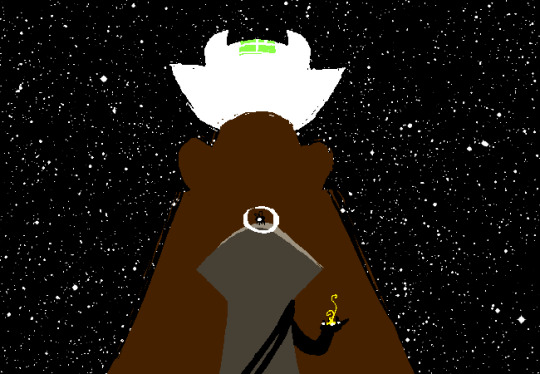
There is something familiar about this.
WV isn't familiar with Bec's symbol, so it's something else about this situation that's jogging his memory.
Perhaps it's the decapitation of the Frog Temple, which is becoming something of a pattern in the Sburb sessions we've seen. Could it have a deeper meaning?
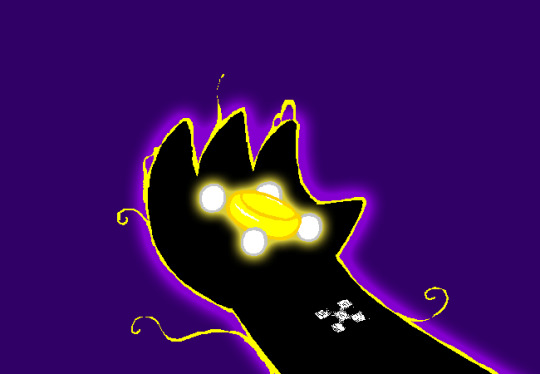
You have not inspected your treasure in years. You have spent ages guarding it without understanding its purpose.
You saw it in action, though!
Are you saying that you don't know what it does, or that you don't know what it's for?
Its only purpose you have understood has been to remind you of things you have taken care to forget.
I can think of two ways to read this.
WV genuinely doesn't understand how the Ring works. As far as he's concerned, it's a dangerous weapon that slaughtered his allies, and nothing more. He's never used it, because he has no interest in weapons of mass destruction - and therefore, its true abilities are unknown to him.
WV knows exactly how the Ring works, but still refuses to use it, even to save his own life. Sure, it can turn him into a demigod - but doing so would turn him into the same monster that ruined everything on the Battlefield. His refusal to use or even acknowledge the Ring is a principled stance against a device he perceives as evil.


Jade's final kernel is turning the chessboard into a fractal.
The game is probably trying to stack four or more dimensions into 3D space, so it make sense that we'd get something screwy.
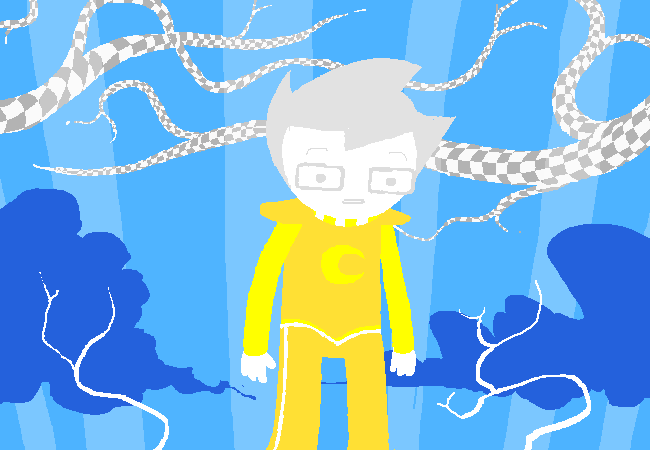

170 notes
·
View notes
Text
Hyper Light Breaker launches in Early Access on January 14, 2025 - Gematsu
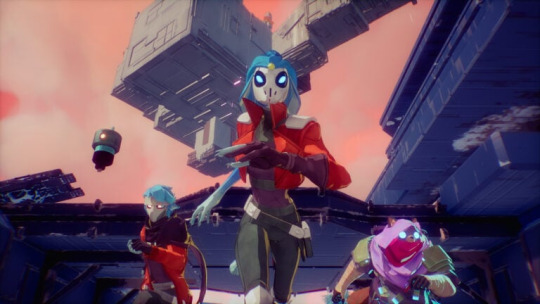
Roguelite action game Hyper Light Breaker will launch in Early Access for PC via Steam on January 14, 2024, publisher Arc Games and developer Heart Machine announced. It is expected to remain in Early Access for about one year.
“We’re thrilled to be a part of Day of the Devs: The Game Awards Edition and finally reveal that Hyper Light Breaker will be launching in Early Access in just a month,” said Heart Machine founder and creative director Alx Preston in a press release. “From all of us at Heart Machine, we really can’t thank our community, friends and colleagues enough for all of the support over the years and sticking with us as we’ve worked on our most ambitious project yet. Launching Hyper Light Breaker in Early Access will be just the beginning, as we want the community to be part of the game’s development journey. We really can’t wait for players to join us in the Overgrowth to bring Hyper Light Breaker to its full potential.”
Here is an overview of the game, via Arc Games:
About
From Heart Machine, the award-winning team behind critically-acclaimed titles Hyper Light Drifter and Solar Ash, comes Hyper Light Breaker, a new cooperative roguelite adventure set in the beloved Hyper Light Drifter universe. Hyper Light Breaker is a brand-new entry in the Hyper Light franchise, with a unique story fully realized in 3D for the first time. Set decades prior to Drifter, Hyper Light Breaker has you take on the role of a Breaker, a mercenary tasked with entering the Overgrowth. Using a combination of fast-paced hack-and-slash combat, ranged weaponry and gadgets, players can expect to fight through and explore a wide array of procedurally-generated open worlds. Though you’ll start your journey trying to help the settlement, it’s clear that there’s something sinister in this long-forgotten land. Only through tenacity and rigorous exploration will you uncover the dark truths of the Crowns, The Abyss King and this brutal, eerie new landscape. Players can choose to play alone or with friends to explore open worlds, create new builds, rip through hordes and overcome the Crowns and the Abyss King.
Key Features
Ever-Changing Worlds to Explore
A world in disarray, with mysteries to solve, vicious enemies to fight, and full 3D environments to explore.
A vast, ever-changing, procedurally generated world awaits with large scale open biomes and deep labyrinths.
Worlds are procedurally generated with unique layouts, enemies, loot and rewards leading to multiple playthroughs.
Traverse landscapes with incredible freedom with a variety of abilities; wall-dashing, hoverboard, glider and more.
Join the Breakers
Battle through the Overgrowth alone or as a team in online co-operative play.
Face hordes of enemies and brutal bosses in frenetic third-person combat.
Rise to increasing challenges stacking through every run.
Explore, Collect and Destroy
Discover and unlock a wide arsenal of weapons, items and upgrades to create the ideal build for new runs.
Learn more about the Overgrowth from the fragmented memories of its mysterious defenders, the Crowns.
Bring back resources to help the settlement flourish over the course of your journey.
Watch a new trailer below.
Early Access Release Date Trailer
youtube
12 notes
·
View notes
Text
Tomb Raider
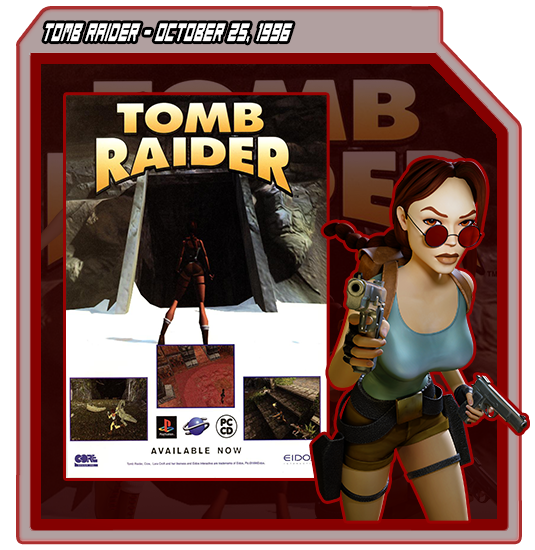
My 6th birthday party was themed after Tomb Raider. We played bingo with custom C-R-O-F-T cards we had custom printed. My dad hired a friend from work to come dressed as Lara Croft. He made me my own Lara Croft belt: a ring of felt with a skull sharpied on front, with two construction-paper gun-holsters. My presents included a few Tomb Raider comic books and an Angelina Jolie as Lara Croft action figure that for the next few years I would sleep with as if it was a stuffed plush and not a hard plastic figure.
We could begin unpacking the fact that I was, in the 2nd Grade, already dreaming of becoming a woman. Though there is a more shocking fact: I did not play through Tomb Raider until last week, a month prior to my 28th birthday.
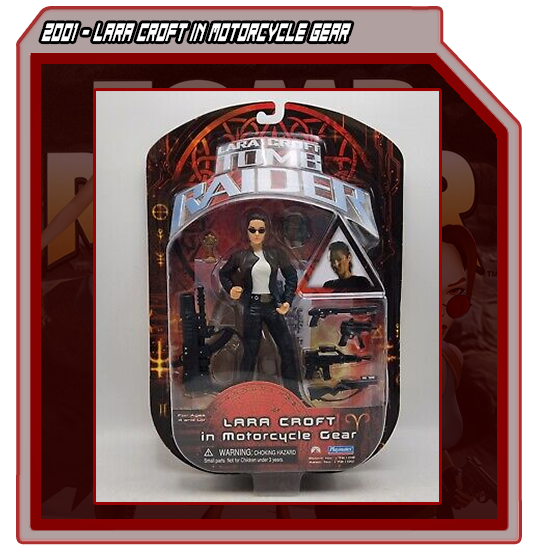
I owned all five of the original Tomb Raider games before starting kindergarten. Or rather, my dad did. While I had a number of kids games over on the family PC (Freddi Fish, Blue’s Clues, Play-Doh, Lego, etc.) (digital Play-Doh sounds sad and/or silly but that game was rad), our only console, a Playstation, sat next to a mix of games for me and games for my dad. A stack of jewel-cases where “Play With The Tellytubbies” was underneath “Grand Theft Auto 2”, underneath “Tomb Raider: The Last Revelation”, underneath “A Bug’s Life”, underneath “Fear Effect”, underneath “Punky Skunk”, and four other Tomb Raiders, and topped with “Rayman: Brain Games”. I was playing games from this pile mostly at random. I was playing games from this pile before I could read. I was playing GTA 2 while wearing diapers. Imagine me here listing all of the various aspects of the world I was not aware of when I played Tomb Raider because it is literally all of them. I had no comprehension of existence when I played Tomb Raider. The first three Tomb Raider games contain tutorial levels separated from the main game. You select “Lara’s Home” and are taken to a unique level: a large mansion containing a training course (of increasing complexity for each consecutive game). The fourth game opens to a mandatory tutorial level that is much more aggressively teachy. The fifth game has no tutorial other than a relatively safe first area As a literal toddler, I would play these tutorial levels over and over and over. What many gamers saw as optional hand-holding warm-up areas became my first digital living space. Lara’s Mansion was the VR Chat Ambient Chill Relax 24/7 Furry Hangout Rain Bedroom of little Skyplayer’s preschool years. The three versions of the mansion were designed with increasing complexity in order to cover Lara’s expanding moveset. Young me only saw this as “was the red disc the one with the swimming pool or was that the blue one?”
This was all amongst the earliest influences on my brain comprehending 3D spaces. While I can, and probably will, write a similar piece praising Spyro the Dragon for likewise affecting how my brain is built on locational memory, Tomb Raider was just a much more grounded example. Lara moves stiffly, slowly, methodically, not unlike a toddler learning to walk. She rocks back and forth to turn in place. She takes careful steps back from dangerous ledges. She sidesteps one foot at a time to align herself with wall switches. She inhabits a house too large for herself. The mansion’s walls are belittling, the blocky polygonal stairs too large, the spaces between furniture vastly empty to accommodate player movement. Lara is only as proficient at locomotion as the player is with their controller, only as familiar with her own home as the player is with it, not much more than a child is to their own home. An adult player will complain about the tank controls, a child will see and feel a realistic depiction of their own lack of balance and confidence in movement.
Children can also run around in a circle in a video game for hours and be entertained while nothing in particular is happening. And be too scared to step outside the safe boundary of the tutorials. I mean Lara’s Butler is scary enough!
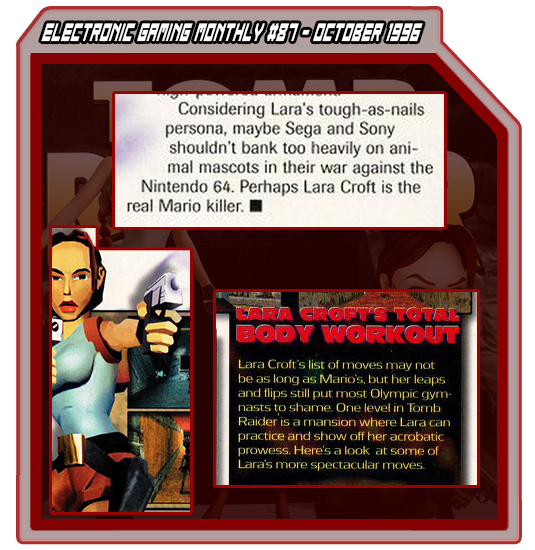
Now that you are equipped to properly call out my nostalgia goggles, I will immediately say that as an adult I found the tank controls of Tomb Raider to actually be profoundly satisfying and nigh mechanically unparalleled. Tomb Raider, released in October of 1996, followed Super Mario 64, released in June of 1996 in Japan but not until September for the US, by a margin slim enough that the former could not have been influenced by the latter beyond the developers knowing Nintendo was also doing A 3D Thing. This is probably an obvious statement to those alive at the time, but the mythology of Super Mario 64 existing as a progenitor of all 3D creation in the digital realm has buried itself deep in the cultural zeitgeist. I believe Nintendo is only as responsible as Core Design or Argonaut or any number of hobbyists exploring the computing power available in the 90s, even when it comes to things like “widespread public perception” or “game design precedents”. The 3D-Game was inevitable.
Which is all to say that Tomb Raider has ideas about 3D design that differ wildly from Super Mario 64 because they are two separate branches burgeoning from the theoretical 3D progenitor. Where Nintendo saw perhaps a more natural approach to design (rolling hills, free-flowing landscapes, open plazas with branching paths not unlike the Hub-And-Spoke design adopted by Walt Disney), Core Design saw structure and rigid shapes in the form of human architecture. In a 2007 documentary Core’s studio manager Gavin Rummery explains the level design being the result of working backwards from the design of Egyptian tombs. The interconnected rooms of sometimes-claustrophobic square hallways and grid-based rectangular rooms of towering ceilings came from the influence of human architecture, not software architecture (though the Saturn’s peculiar rendering techniques probably helped) (the Saturn rendered skewed sprites, not true polygons, something in between the “fake” 3D of Wolfenstein or Doom and the “real” 3D of polygonal meshes.) (All digital 3D is fake! It all gets rendered to flat pixels! It’s just arrays of points stored as plain ol’ integers!).

Hopefully this helps disperse the idea that Tomb Raider’s level design or control scheme are “outdated”. I truly don’t believe Tomb Raider has many software limitations that “don’t hold up” to modern eyes. On original hardware I would perhaps argue against the draw distance (though there may be those that argue for it adding to the atmosphere given, for example, Silent Hill), but the playthrough of mine I’m writing about now was done using the “Tomb Raider I-III Remastered Starring Lara Croft” collection (a mouthful, it seems “The Tomb Raider Trilogy” was already taken as a 2011 repackaging of the three later-6th and 7th generation games).
In so many 3D platformers, especially the collectathons, levels are presented as open playgrounds. Shining, often spinning objects sit atop tall geometry, drawing you in to search for the start of the guided hiking trail that will lead you to it. Pathways of small collectibles lead you meandering between landmarks, perhaps branching to small puzzle rooms. You go into a cave, solve a puzzle, get a reward, and leave the cave with a slightly heavier inventory. They are branching trees that stay close to the root: sometimes one reward will lead to a second, rarely will a more complicated chain emerge. Each time you return to the same open area, ready to find the next branch.

Tomb Raider isn’t doing this and it doesn’t want to do it. Some would say Tomb Raider’s linearity is a limitation: a way to render less, design less, display less. Screenshots do less justice of telling Tomb Raider’s intentions than a distant view of a Nintendo level.
“Indiana Jones and the Raiders of the Lost Ark” opens to Indy trudging through a jungle and coming to the overgrown entrance to an ancient structure. There is no immediate awe to the interior of this structure. His local guides abandon him. He barely fits through the narrow hallways, he intrudes on a hive of spiders that have taken residence, the very stonework become hostile towards him with deadly traps and collapsing floors. Only after much ordeal does any room open to be larger than the last, and even then it’s the most dangerous one yet. Upon committing thievery the building completely turns against him, chasing him out.
“Tomb Raider” begins with Lara arriving at the plateau of a snowy mountain, standing in front of the opening to an ancient structure. Wolves storm out of the stone gates, killing her local guide. The player is given control.
The first “world” of Tomb Raider, for lack of a better word describing a set of levels, is one continuous trek through this ruined place. You spend quite a bit of time running through a snowy cavern, killing the wildlife you have intruded upon. The caves begin large enough, though already smaller than any tunnel you will find in Super Mario 64, gradually shrinking as you dare to go deeper into the darkness. Through a few levels the icy rocks give way to smooth stone, then to walls inscribed with ancient writing, then to mossy ruins of a long-forgotten civilization. All the while the gameplay is ramping up in difficulty as any game naturally would. Small hops become larger leaps. At first these jumps have floors below, requiring you to climb out if you fail. Then these chasms get deeper, falling means damage. Then missing a jump becomes deadly. You find a bear making its home underneath a precarious bridge, then you find yourself leaping off high rocks to avoid pits of spikes. The level design narrows, caverns become hallways, caverns become rooms. Danger begins condensing: multiple difficult jumps between any flat areas, those flat areas inhabited by jaguars instead of bats.
Finally, in the third level of a single linear path, when even the doorways narrowed and now you feel like you’re slipping between cracks in walls, you come to the Lost Valley. An immediate awe-striking view of a jungle untouched for untold years. The game did not hand you Bomb-Omb Battlefield and tell you to have fun, it hid this larger world from you miles beneath hostile territory. You bask in the graphic fidelity of a fully grown jungle. And a T-Rex appears from the black fog. It eats you in one bite. You respawn, now knowing this valley is in fact the most hostile place yet. You are not here to explore. You are here to get the thing you came for and to then get out.
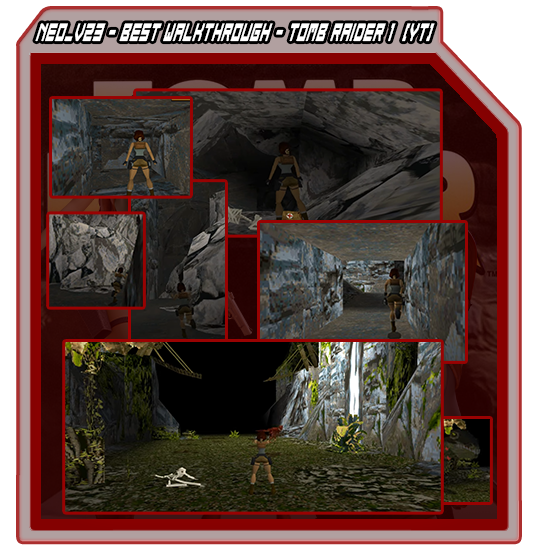
Where Indiana Jones is satisfied with its location-centered short story and happily broadens out to a typical three-act character-centered adventure film, Tomb Raider isolates this as a gameplay loop, the rest of the game running that design to its logical conclusions. Each “world” plays with geometry and pacing but always comes back to that core design: you are always pushing deeper into the hostile unknown.
Tomb Raider and Super Mario 64 share the philosophy that The 3D-Game’s target is to inspire and satisfy curiosity through exploration. Mario, and really any similar Nintendo game, especially Zelda, envision this act of play as a child running around a park. Tomb Raider offers a more active engagement, a way of pushing back on the player. I find this tactile force-feedback the much more satisfying style when it comes to playing games as an adult. As a kid I forced Tomb Raider into the Nintendo style, by refusing to engage with the hostile areas.
This dichotomy is displayed just as clearly in Tomb Raider’s other, surely more, contentious aspect: the controls.

Tomb Raider is using what is often referred to as “tank controls”. In most 3D games the left directional pad or joystick will move the player in four directions. As soon as the control stick is moved the character will pivot their entire body to face the direction pressed. If Mario is facing away from you and you press “down”, or towards yourself, Mario too will face to look at you. This is what is colloquially known as “controlling a dude”. Tomb Raider’s controls are something I wish was more often colloquially referred to as “driving a car”. While Lara is facing away from you, pressing down causes her to backstep, moving in “reverse”. Pressing left or right will cause her to rotate in place, pivoting in a circle while remaining still, like a car pulling off a pavement-burning screeching-loud donut stunt, or, if she is already moving forward, will have her drift to the appropriate side in a smooth arc. Pressing forward will make her move forward, this is your “gas” button.
You could say that this makes her movement independent of the camera, though Tomb Raider’s camera employs more restrictions than Mario’s.
Tank Controls are often paired with a “fixed camera”, meaning multiple static camera positions exist parented to the world geometry, hand-picked by the developer, as in Resident Evil, a set-up that would be correctly described as having camera and movement systems that do not affect one another. Tomb Raider’s relationship is better described as being the inverse of Mario’s: the movement controls the camera. In the original release of Tomb Raider there was no player camera control outside of a special “look mode”. While holding the first left shoulder button the directional control is changed to only affect Lara’s head, which in turn carries the camera along with it. In the re-release the player is allowed some control over the camera with the right analog stick, but trying to force the camera to face Lara head-on will cause it to quickly swing around her, placing you back behind her. In either situation if the player wishes for the camera to turn and rest to the left, Lara must physically turn to the left.
This creates a close connection between the player and Lara. Nintendo’s games often feel, by design, like peeking into a toy diorama or a miniature world. Tomb Raider puts you closer to the action, demanding focused vision and intentional movement. It is planting the philosophical roots that would become the modern third-person cinematic experience, your God of War and your Last of Us. Though those games have, with time, sanded away the satisfying friction that comes with the other half of Tomb Raider’s interface: movement.
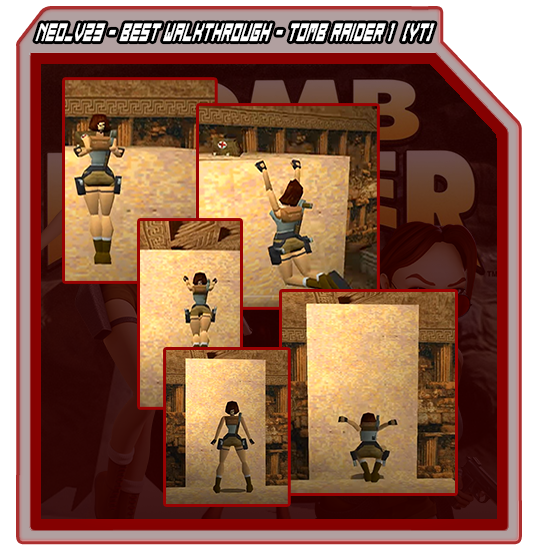
The original Super Mario Brothers popularized a subtle, almost unconsciously intuitive quirk of control: holding the jump button makes you jump higher. There are dozens of frames one could release the jump button to cut the jump short, incorporating their prior velocity to create a nearly unique jump arc. Despite this complexity, it only takes a few minutes of practice for the jump in Mario to become second nature. It begins to happen with only milliseconds of conscious thought, a reaction more than an idea.
Tomb Raider gives you a small handful of canned jumps. On a flat surface, pressing the jump button will always result in Lara jumping over one grid tile and landing on the one beyond it. Tapping the back button will have her hop one tile backwards, the perfect amount of running room for you to press forward and hold jump, executing a running jump that will always take you over two grid tiles and land on the third. These can be combined with a “grab” command that has her reach out to grab the ledge of an adjacently forward grid tile. Ignoring movement intricacies used by speedrunners that are not required for the game’s completion, these four jumps are your only options.
This is what makes platforming the star attraction of Tomb Raider. The grid-based levels and the intimate controls meet in harmony to present the main challenge of the game as a tight loop of observation, planning, and execution.
Any given room in Tomb Raider can be broken down into an ordered list of these four jumps. Any given gap between broken pillars or jagged cliffs can be counted on grid, asked by the player which jump this particular gap calls for, and narrowed down to a specific solution. As we charted before the player is introduced to these types of gaps one by one, with gradually increasing punishment for failure. This complexity is increased through the level design, not the available movement. You will never get a power-up that affects jump height or unlock a new kind of movement tech (within this first game anyway). Instead the game may ask for more planning and planning under pressure. It will introduce sloped surfaces, where Lara will automatically plummet if you do not decide whether or not to jump and whether or not to grab by the time she slides off the end. It will introduce traps: retracting blades that add an importance of timing, spikes that require slow movement to avoid damage, puzzles that require retreading of areas with retracted platforms, or perhaps from a reverse direction, requiring a fresh perspective and replanning.
Where some games suffer from a feeling of redundancy that comes from canned interactions, single-solution platforming challenges leading to the thought that you are simply acting out a set of button-pressing instructions designed by the developer, Tomb Raider manages its complexity ramp to keep the challenges fresh. Where,say, Uncharted will present over-the-top blockbuster fake danger vignettes for every few seconds of wall climbing and ultimately present only a facade of complexity, Tomb Raider will give the smallest of static spike pits enough real danger to be far more worthy of your attention.
There’s just enough room for self-expression to place the final cherry on top of Tomb Raider’s repertoire. The standing jump can be performed in any direction, allowing for sidehops and backflips. Chained jumps will initiate more quickly in succession. This allows you to complete otherwise fiddly zigzagging sets of platforms with essentially a string of bunnyhops, where Lara never has to change direction or stop moving. Climbing up from a ledge has a stylish acrobatic cartwheel variant if an extra button is held. Lara can perform a graceful swan dive with a complex three-button running jump but it never serves any gameplay purpose. You are given movement options, but complexity is always defined by level design.

And then the bubble bursts.
Maybe that’s not an apt metaphor. It’s not a sudden pop. I didn’t finish that last paragraph and stare at the blank page for a moment, and then hit enter a couple times and start having this epiphany.
No, it’s been a few days. It’s been a few quiet showers. It’s been a few panic attacks, a few half-filled job applications, a few nights of restlessly tossing and turning while that horrendous buzzing scatters my brain waves. It’s been a few skipped meals and a few evenings of guilt for the ones I didn’t skip. The ceaseless news cycle all the while.
It’s directly after an episode of Sarah Zedig’s Trans Questioning 2 that all this stress comes to a point. I’m staring at the ceiling and eating a Wendy’s Frosty and listening to the rare patter of Californian rain. I’ve finished Studio System: Guardian Angel today and played the new Monster Hunter beta and didn’t get any art done. I’ve begged myself to relax for a day and hid the pill inside the peanut butter of content creation. I feel bad that even the act of playing an artful video game is something I view as a step in my own art, but even that selfishness is manufactured as an excuse to myself.
My mind comes back to this article. I think of the bulk of it being so mechanical. I wouldn’t argue that there isn’t an art in breaking down the mechanics of a video game into a digestible explanation. I recognize the voice in my head telling me it's pointless to be rambling about a nearly 30 year old video game as being wrong. Lots of people write things like this, lots of people read things like this. It’s remarkably easy to me, in fact, to ignore the negative thoughts and the imposter syndrome and the nagging fears.
I could make this three times as long. I could write about the puzzle mechanics and the underwater segments and the sound design. I could praise the original pixel textures, taking some time to download a repository of all the ripped files to show you a few of my favorites. I could put them side by side with the new Remastered versions, showing how clearly they used Generative AI that, even with human touch-up, refuses to make sense under scrutiny. For some time I played with the idea of including my complete review of Tomb Raider 2 inside of this one. Tomb Raider 2 is truthfully awful, as it misses the point of Tomb Raider and focuses on all the least fun parts of this game. This could become an entire series retrospective. I could treat this as a video essay script. A lot more people would watch that than are going to read this.
Even if I stop here I’ve checked off every box with due diligence. I went through the motions. I talked about my childhood. I made this personal. Then I dove into the mechanics. I hopefully offered a unique outlook on old discussion simply by being a unique individual, as we all are. Now here at the bottom I make it personal again. Even this diatribe is fitting in the formula. It’s so easy.
Why am I doing this?
Now there’s the hard one.
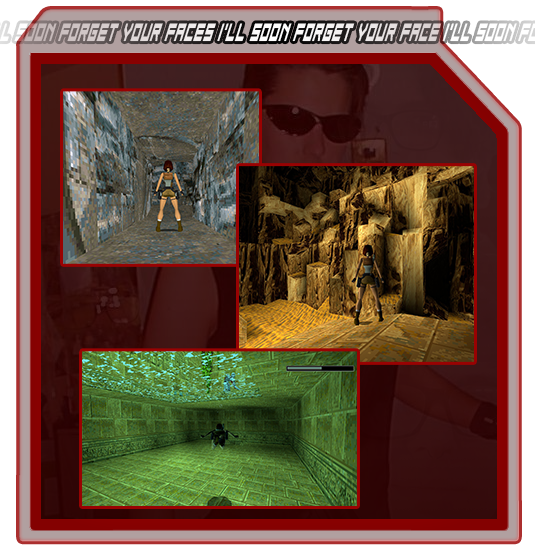
I don’t have a job right now. I am very lucky to have found someone to house me. I have enough money to keep me alive until I find another day job. Meanwhile I’m filling my days with the Fantasy. Every year or so I find myself in a time between jobs, when the stress of living is lifted just enough that I have the drive to create things. I have just enough time to breathe that I remember I have the drive to create things. I see so many of my friends living off their creative work and I recognize within myself the ability to do the same and I get caught up in trying to chase that end because it feels so close.
It’s really not. I can buy a lottery ticket just the same as anyone who has won millions. I can write a video game review just like so many that I read that are by people with incredibly large Patreons. I have piles of notebooks of ideas for video games and youtube videos that I know I have the talent to create and I know have all the criteria to be popular, but I think about the end goal and I think too hard about what drives me and it all falls apart.
I hate money. I hate capitalism and clout and branding and the grind and I hate watching people sell out and I hate seeing my friends selling Makeship plushies and I hate the numbers I hate the numbers so god damn much. I hate their successful Patreons and their viewcounts and I love what they create so much. I wish one could exist without the other. I wish I – no I wish everyone could exist without the numbers.
If waking up every day and feeling the urge to play and review a 30 year old game and share my childhood with it to you and infodump about it for a while was enough to be alive then I would do it. I would do it every day and it could all be played straight and I wouldn’t feel this awful urge to ironically twist everything I create.
This is where my artistic ability breaks. I lack the genuinity. I have every skill needed to put all the crazy imagery in my brain down on the page. I can see exactly how this essay should have ended. The concluding paragraph has been seared into my brain by my middle-school teachers. I can see the final note at the bottom, the same note at the bottom of every blog post on every blog. I see the exact words -
If you enjoyed this review you can help by supporting me on Patreon. My current goal is to have these reviews hosted on my own website. If you read this on Tumblr then your donation will go towards the hosting costs. If you’re reading this in the future on Earth64.com then this was made possible by viewers like you, Thank You.
- as these words have been sitting in my brain for a few weeks now, begging me to finish the Content part. The Fantasy promises so much, asking for me to just do what I do best, telling me that every lottery ticket I buy with my hard-earned time is another chance for it to come true. The Fantasy feeds my ego. It tells me how close I am. It tells me how many of my friends have already been selected. It offers me avenues of revenue. It fills my dreams with Makeships and fanart and recognition. It tells me my art is worth more than me. That my friends are so far above me for having created their own, that I cannot be anything until mine is complete, that all I have to do is follow the formula.
I try to fight it. I try to lie to myself. I tell myself my art isn’t good enough. That I’m not old enough. That my time will come but for now I need to stop trying. Fill out an application for Costco and stop listening to the Fantasy. My imposter syndrome is a self-diagnosed injection of Reality. It’s a conscious decision.
And these two parts of me smash together, a hundred miles an hour collision that finally makes the bubble pop and I start typing this.
Nearly everything on this blog so far follows this meta formula. I get three quarters through and have this internal battle, Fantasy versus Reality, where neither comes out on top and I end up breaking character in defiance. I try to find the kernel of genuine emotion, because neither the emotional personal stories nor the mimicry of professional infodumping are genuine, even if the former tries to claim so over the latter.
I know this part is the genuine one, because I don’t know how to end this. I can’t offer a resolution. Every atom in my body is screaming at me to give in to the Fantasy. To create for money. To keep up the daily panic attacks long enough to create something that will be seen and I will be deemed worthy of being kept alive. I don’t care what others will think of my art. I don’t care if it will touch someone emotionally. I don’t care about building a community or becoming famous or making sure the next generation can find solace in my words the way I find it in the ones before me. I just want enough money to be alive.
Anything I create before I have the money to live will be tainted by that desire.
I hope the world will one day get to see the things I could create if I could create with genuinity.
-
-
-
-
-

I give the first Tomb Raider a 4 out of 5, to keep it real.
Tomb Raider 2 gets 1.5 out of 5 its shit.
7 notes
·
View notes
Text

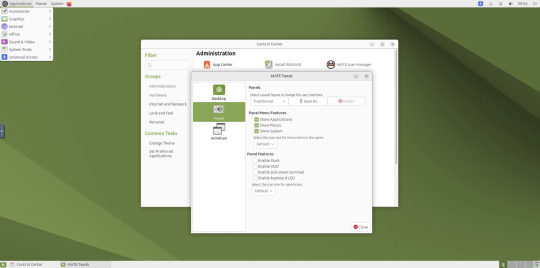
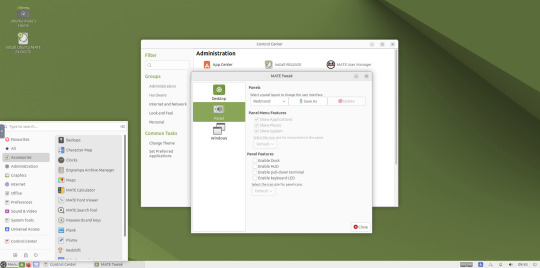
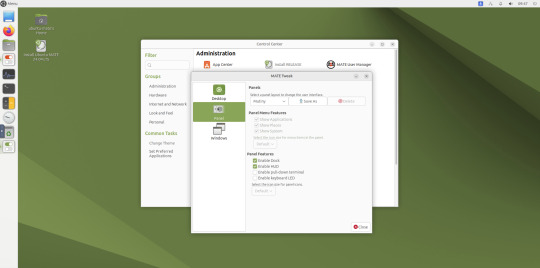
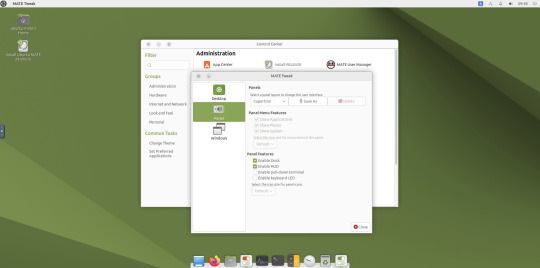
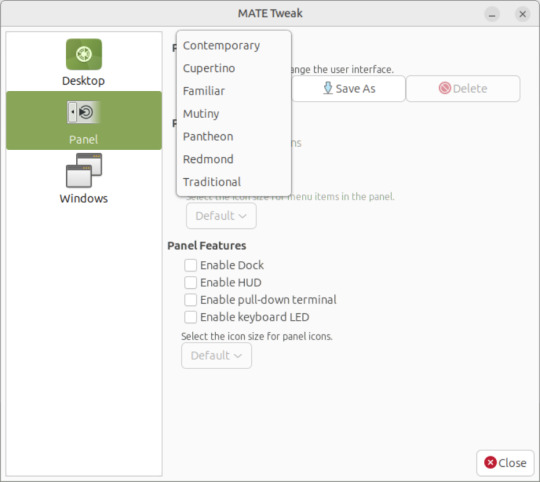
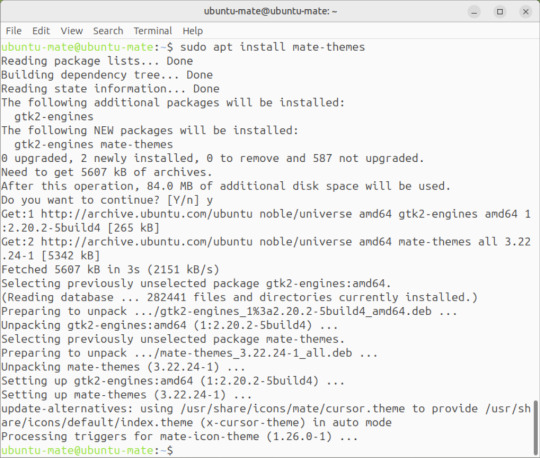

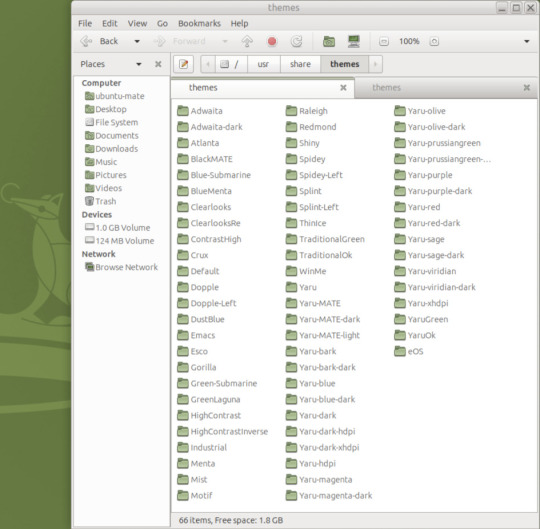
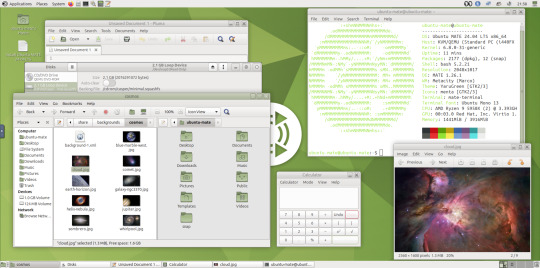
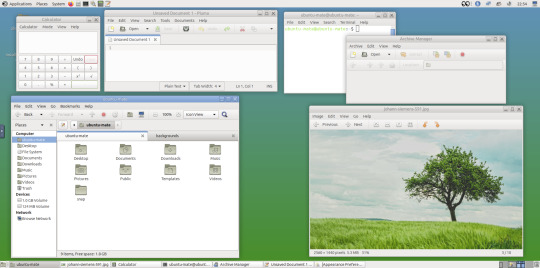
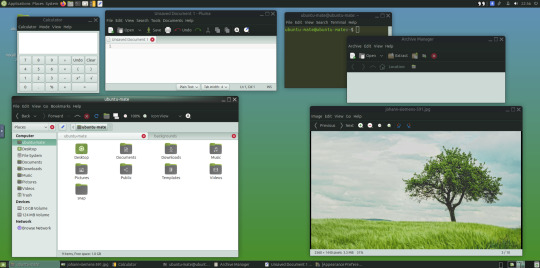
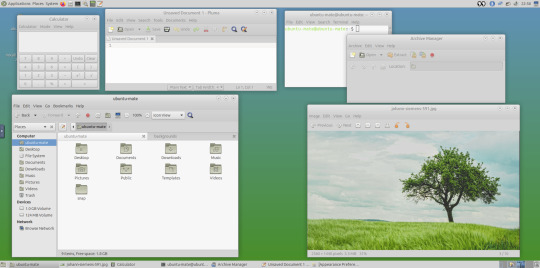
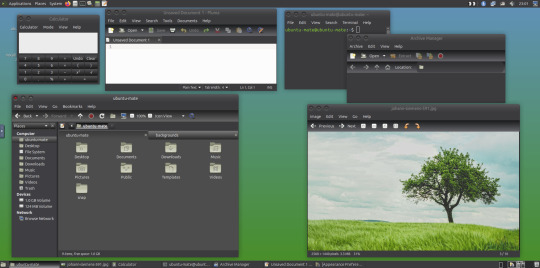

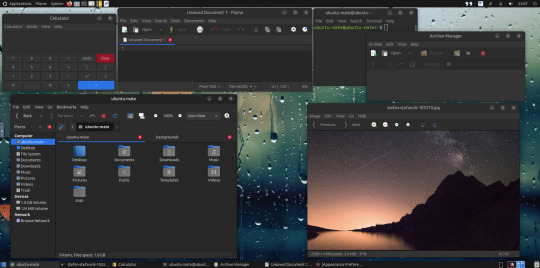

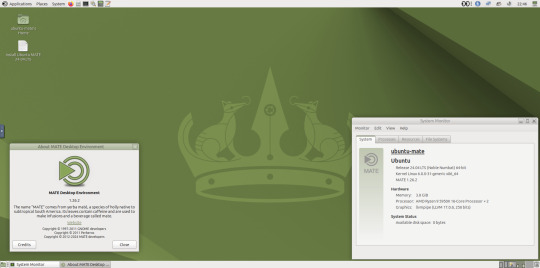

May 2025.
I tried installing a set of themes on Ubuntu MATE 24.04.1 LTS in Distrosea today.
https://distrosea.com/
These themes are provided as a theme package found in vanilla MATE desktops such as Debian and Fedora.
MATE is the modern day continuation of GNOME 2, a very popular, efficient and functional desktop environment from the early 2000s.
The theme pack I selected are compactable GTK3/4 (Graphical Toolkit) versions based on classic GNOME 2 era themes.
Ubuntu MATE website:
https://ubuntu-mate.org/
Debian Linux website:
https://www.debian.org/
Fedora Linux website:
https://fedoraproject.org/spins/mate
See MATE Desktop website here:
https://mate-desktop.org/blog/
About the Graphical Toolkit user interface:
https://en.wikipedia.org/wiki/GTK
I used the MATE Tweak tool to adjust the panels from the 'familiar' layout to the 'traditional' layout. Here are many of the layouts available.
MATE Tweak can change the panel layout between Traditional (GNOME 2), Unity, Redmond (Windows) contemporary (Mac OS) style.
Here are many of the layouts available.
Afterwards, I used the command line to install the themes with the command: sudo apt install mate-themes.
This command then prompted me to agree the system changes and then it installed the required theme files to the list.
I opened up the theme folder in the Caja file manager. This shows all the ones installed on the system.
Next I opened the appearance preferences and cycled through each theme. There are a total of 12 new themes it added alongside the existing Yaru Colour theme collection for Ubuntu.
This package couldn't be installed graphical so this is why I installed it through the terminal. It is also available to install through the Software Manager on Linux Mint.
The theme package can also be installed on the Cinnamon desktop and other linux distributions.
I like these themes as they provide a more 3D feel and is refreshing to see themes for a desktop environment that hasn't moved towards flat design. It themes all the desktop elements from the windows, panels, drop down menus, CSD apps and widgets.
My favourite one is called YaruOK (blue), as it provides resizable window controls, 3D controls and provides a familiar look to the desktop. The theme is also called TraditionalOK.
This theme is a fork of a GTK2 theme called Clear-looks, which was created by Red Hat developers.
YaruOK is a modern variant that uses GTK3 & 4. The theme is rendered in SVG instead of PNG format which improves HiDpi scaling and features themed client side decorations for header bar windows such as the Disks utility.
I also added a GNOME Eyes widget onto the panel!
These fun set of eyes follow your mouse cursor around the screen and can help you find the cursor amongst the clutter of windows. It is built to be very lightweight.
I also like the workspace switcher on the bottom left, which allows you to switch between as many desktop workspaces as you want.
The little square windows within each desktop can be clicked on and moved to another workspace.
Like with other desktop environments, you can also right click a window and move it onto another workspace. Each desktop can be named for a assigned task.
A System Monitor widget can also be added to the panels to display CPU, Memory, Swap and Network processes.
There are many other very interesting widget to play around with on the desktop and panels as well!
Here are the MATE themes in Ubuntu Linux 24.04.1, integrating with the Cinnamon desktop.
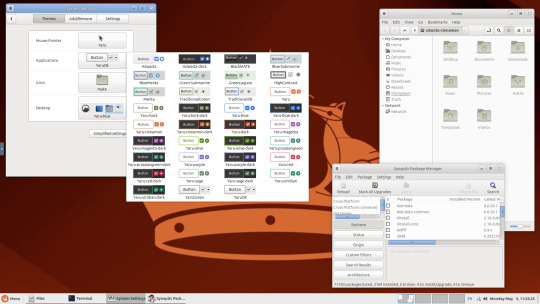
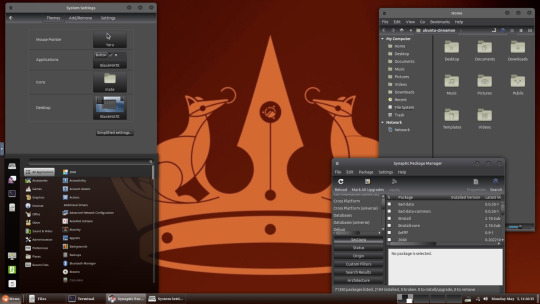
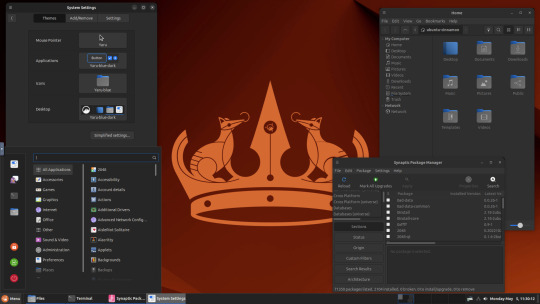

Below are some theming screenshots from Debian MATE 12 Linux.
I've customised the panel, selected the compact menu and changed notification sizes to make it more clearer. The window lists stack onto each other with the increased size.
The MATE panels have adjustable transparency and can be re-coloured and textured very easily through its own preferences box.
See screenshots below!

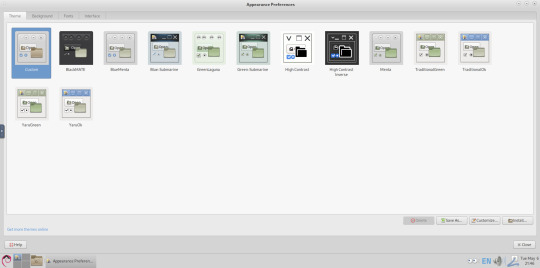
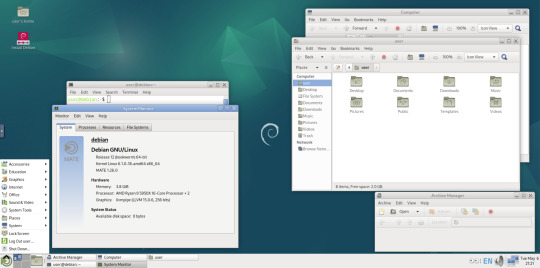
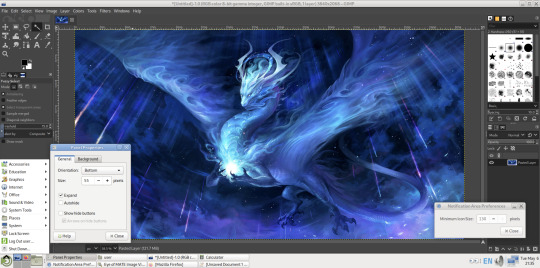
A very interesting look at the user interface elements found in GNOME 2, MATE and Cinnamon Linux desktop environments!
5 notes
·
View notes
Text
We're back to bats.
It's really hitting me just how many of these papers are about only my favorite neuroscience topics-- gonna try to fix that going forward, since one thing I want to do is broaden my foundational knowledge. Increasingly obscure bat-echolocation-vestibular sensation-audiology papers are probably not going to help me accomplish that goal.
Anyway, bats!
Part of the function of the hippocampus (a brain region) is updating your memory of where you are in space. Particular cells called place cells will respond to particular allocentric coordinates-- meaning "that specific corner of the room" rather than egocentric coordinates, which mean "whatever corner is to my left right now". If a rat is running in a maze, the same cell will respond to the same turn of the maze every time. The area that a single place cell responds to is called its "place field". This is all part of how you keep track of where you are, where you're going, and where you've been.
Bat hippocampuses (hippocampi?) also do this while they fly, except more fun, because their place cells operate in three dimensions. Or maybe it's just stacks of two dimensions. Apparently scientists argue about that. But point is, they do this too! What's more fun, we can actively track how much sensory information bats are taking in while flying because we can record their echolocation sounds.
My favorite result from this paper is that the faster the bats are vocalizing for echolocation, the smaller their place fields get. Basically, the faster the bats update their location and their stored knowledge of their surroundings, the pickier their place cells get with responses. More information via faster echolocation calls = more information for place cells to use to get HELLA specific.
Neat!
Thanks for tagging along!
Wohlgemuth, M.J., Yu, C., & Moss, C.F. (2018). 3D Hippocampal Place FieldDynamics in Free-Flying Echolocating Bats. Frontiers in Cellular Neuroscience, 12:270.
doi: 10.3389/fncel.2018.00270
#biology#science#science communication#neuroscience#reading neuroscience#scientific literature#bats#echolocation#hippocampus#hippocampal place cells#place cells#navigation#golly gee will reading-neuro talk about bats today#there's only a 75% chance
6 notes
·
View notes
Text
The State of Things Present
this post was available for patrons a week early! please consider supporting me over on patreon!
I kept trying to make this post fancier and better and more engaging, and then I realized I was doing that thing where I make myself too overwhelmed to actually finish and post it. The other thing was I kept gunning for a once-a-week posting, and uh… yeah that's not sustainable. So here we go!
The Ghost of Spacefarer Present appears before you He whispers, very quietly, yet in a voice that resonates: "Time to resurrect the Spacefarer"
Ok so the spacefarer (me??) was very tired, but he's awake now and doing things!
Life status
We moved! My wife and kids and I packed up and headed some miles south of our previous house. It was a risk for sure. We didn't know how things would pan out. We really needed to get away from our old environment, our old town, our old house. We loved that house, and we'd said so to each other many times even as we were halfheartedly searching for a new one. But at some point that house had become too burdened with bad memories and traumas, not to mention that after the pandemic, we had no more real roots there. Everyone had moved away, the communities we were involved with had disbanded or changed. And anyway, my wife would be starting a new teaching job down south.
We were fortunate enough to find a new house we loved, and fortunate enough to be in a position where we could actually make the move. I'm aware this is a privilege, given the economy and the market, and so I can only express my thankfulness and consider it a blessing, especially as we healed through our grief.
I have an improved office now! This is where I work on my day job (software/web dev) and my unday job (Studio Spacefarer). With my genetics stacked against me, but also with my desire to be able to keep up with my kids and be there for my family, I collected a standing desk, a walking pad treadmill thing, and an ergonomic keyboard. I'm walking or at least standing most of the day now, which has made a surprising difference already.
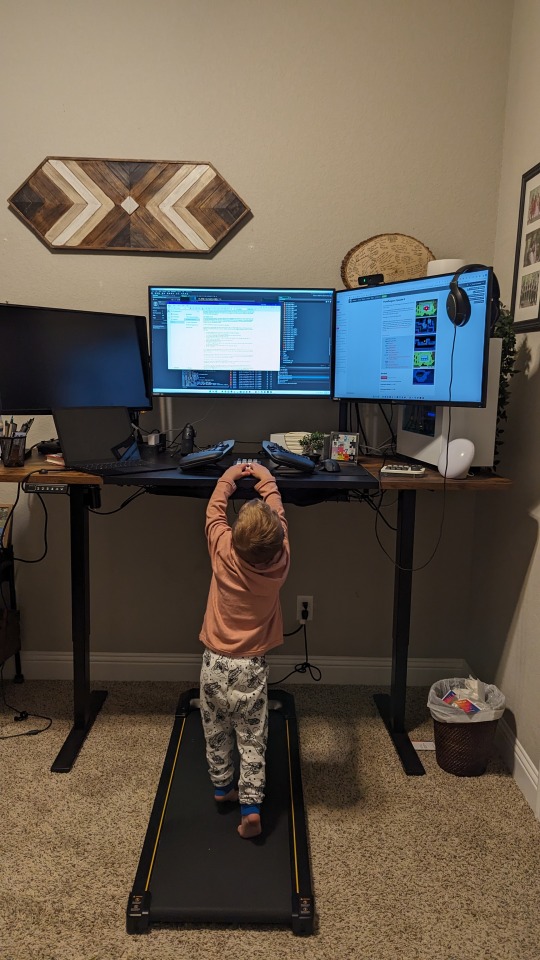
I was gonna post a wider view of the office, but my 3yo son ran up while I was taking pictures and started "working" (mashing the keypad), so this is automatically the better pic. Them's the rules.
Anyway, in short, we made it, and it hasn't been a smooth ride the entire time, but it has been well worth it. I've been able to get back into gamedev, which has been a huge boon to my mental health too.
Speaking of… (ghostly drumroll)
Game status!
The good stuff. Here's where I'm at presently with Episode III!
The game is completable from start to end (definitely NOT feature complete)
Jumping, swimming, and dashing all work like a charm and are super fun
Three enemy types have been added, including custom A* pathfinding for the sea monster
Two new collection mechanics (one is heart containers, the other will be a small surprise)
Depth sorting and fake-3D, as mentioned previously, which lets me do lots of fun effects
Day/night are now on a new system, and cave darkness is now a thing (I tried to implement this in PD2 but couldn't figure it out)
Palette swapping for night and lighting effects now uses GameMaker's built in layer effects
Much of the game is now decorated
Updated the game's palette to be more pleasing
Better borderless windowed mode, frame toggling, etc. (I'd made a post about a third party plugin I used to do this previously, but not long after that, GameMaker added an official setting to be toggleable at runtime, so I switched to that… much easier lol)
New audio library which has been a MASSIVE boon (Juju's Vinyl)
New flexible debug/inspector mode which allows me to change values on the fly more easily
State machine rewrite using structs instead of data structures--extremely flexible and less error-prone (in fact the data structures here were the #1 cause of crashes in Episodes I and II)
Save system rewrite, also using structs instead of data structures (thus fixing the #2 cause of crashes in the first two episodes)
Adjusted the way walls get displayed in interiors--will make a post on this later
Lots and lots and lots and lots of bug fixes
Post end status!
I'm not exactly sure how to wrap this up lol, but y'all can be encouraging me, if you have the emotional space to do so! There's still a lot left to do on PD3, and it can be very daunting at times.
Next post up will be looking forward to the future of Studio Spacefarer. I'm very excited about this! Keep an eye out!
24 notes
·
View notes
Text
Is It Really That Bad?
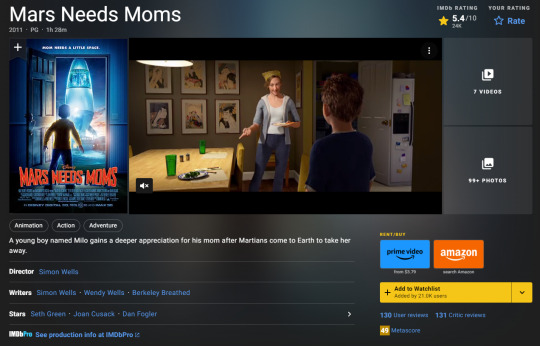
When it comes to infamous animated films, few are treated with quite as much revulsion as Mars Needs Moms. Based off of Bloom County creator Berkley Breathed’s storybook, brought to life by ImageMovers Digital (who created The Polar Express, that...beloved?… Christmas classic), distributed by Disney, and produced by Robert Zemeckis, the film really had the deck stacked in its favor… and yet, it quite infamously fumbled.
It released to become the 12th worst opening for any film in three thousand or more theaters, netting only $6 million on debut, and then proceeded to only gross $39 million dollars worldwide—and that’s including 3D theaters. With a budget of over $150 million, this cause a net loss of over $110 million dollars, which unsurprisingly led Disney to cut their losses and shut down ImageMovers Digital… which is what I would really rather say, but the depressing fact is that Disney nuked the studio before the movie even came out, as if they knew they had a massive bomb on their hand and wanted to punish the studio ahead of time.
As divisive as the studio’s animation was, it’s never really fun seeing an animation studio get scrapped like that. With its death, we lost some interesting film concepts, such as a remake of Yellow Submarine (which would have probably been even trippier with the motion capture animation), Roger Rabbit sequel, and a kaiju throwback film by Michael “Trick ‘r Treat” Dougherty called Calling All Robots. Say what you will about the studio’s output, but it’s genuinely a damn shame these ideas never came to fruition.
Over the years, just about every animation critic worth their salt has given this movie shit, from Mr Enter to the Nostalgia Critic, and Disney has largely seen fit to sweep this under the rug and pretend it never happened. But I can’t do that, can I? Y’all voted for me to watch this for the first time over a decade after it came out, and see if it’s really that bad. Did this movie manage to prove far better than its infamous reputation, or am I gonna have to put myself in a Martian memory extractor?
THE GOOD
Milo is actually pretty believable as a kid. I know some people find this character really annoying, or bratty, or obnoxious, but… that’s just how kids are. He’s a little bit of a shit and doesn’t understand the gravity of things he says sometimes, but he has a good heart and when it gets down to it he does all he can to save his mom. Like he’s just a child in need of harsh life lessons, typical of any fantastical family film. In a movie brimming with awful characters, he’s easily the least worst. Joan Cusack as the mom is pretty good, getting some funny line deliveries, and I’m sure she’s made someone’s list of “Hottest Animated MILFs.”

I think the core ideas behind the Martian society are really fascinating. Here we have a fascist, sexist dystopia. Every quarter of a century children are hatched, and females are passed off to nanny-robots to be raised while males are tossed down the garbage chutes to become feral, hairy wild men. The nanny-bots are programmed with the memories of abducted human women, memories which are forcibly extracted in a very fatal process. The women are then made to serve as the enforcers of the fascist regime, ruled over by an aging ruler who governs with an iron fist and doesn’t accept deviance from her desires, desires stemming from a deranged belief she is bettering society with her straw feminist viewpoints. On paper, it’s all very deep, dark, and intriguing.
The operating phrase, of course, being “on paper.”
THE BAD
Let me just get this out of the way: The animation is awkward, uncanny, and unpleasant. This is not a new or interesting observation, so I just wanted to get it over with as soon as possible, though it does feed into a few other issues, particularly the design of Ki.

Ki is just absolutely aggressively female in her design. Like, she’s pink, she has those curvy hips, she’s just really in your face about being a girl Martian. And yeah, the girls are the ones we see a lot of because of how the society is structured, but she’s so glaringly feminine it’s kind of obnoxious. Like she’s clearly given this overly polished design because she’s the beautiful, heroic lead character; other Martians do not look nearly as pleasant as she does. That’s not even getting into the obnoxious decision to have her speak in outdated hippie slang, a decision that’s about as pleasant as jamming splinters under your fingernails.
She’s not even the most annoying character, though. That would be Gribble, played by Dan Fogler, the fat dude from Fantastic Beasts. You’d think that because he was the best part of those flaccid spinoffs he’d be the best part of this movie, but you’d be absolutely wrong. He’s every annoying comic relief trope smashed into one incredibly obnoxious character, and considering almost no one else in this movie is likable at all he really sticks out as being unpleasantly annoying. It doesn’t help that the single moment they try and give him depth—when he recounts to Milo the harrowing experience of watching his mother die as her memories were extracted, so close to saving her and yet so far—is immediately followed by Ki showing up and Fortnite dancing and spitting out some more of her obnoxious slang.

And that right there really highlights what’s wrong with this movie: It is tonally inconsistent to an absurd degree. With a title like “Mars Needs Moms” and the general atmosphere of the opening as well as the marketing really lead you to believe this will be a simple, silly family comedy where a kid learns to appreciate his parents a la Jimmy Neutron. But then we get into the Martian dystopia, the explicit mass murder of moms, the grim visuals, the constant peril, and it’s pretty obvious the film wants to be serious and say something as well… all while keeping the funny wisecracking fat guy mentor, the Fortnite dancing monkey Martian men, and the pink and perky alien hippie graffiti artist who loves to talk like she just stepped out of Woodstock. It’s not impossible to handle two wildly different tones in a film, but to say this movie bungles it is an understatement; it ultimately causes the film to lack any sort of identity and just dissolves into an ugly mess of interesting ideas and confused writing that is impossible to take seriously.
IS IT REALLY THAT BAD?
The short answer? Yes, this movie is really, truly awful. But a short answer is pretty unsatisfying, isn’t it?
I was honestly, genuinely hoping going into this that the critics were wrong and maybe there was something to like here… and yeah, there were a couple of things I thought were done pretty decently, but overall the movie is just an incredibly sloppy and tonally inconsistent mess that never really settles into what it wants to be. It actually had me thinking about another movie while watching it, and that movie is The Guyver. While I’m saving a full review of that for when I bring back Michael After Midnight, the film had the same sort of wild tonal whiplash that Mars Needs Moms does, a sort of dissonance in the story where it can’t decide if it wants to be dark and edgy or lighthearted and goofy. But while I don’t think either film is particularly good, I think the fact I find The Guyver to be infinitely more valuable as a film highlights the strength of live action cinema over animation. Jarring tonal inconsistency is just so much easier to swallow when you don’t have to look at some of the ugliest animation you’ve ever seen, y’know?
Mars Needs Moms is honestly quite a bit worse than that score would suggest. This is definitely one of the worst animated movies ever made, unlike what happened with The Emoji Movie, I don’t think the overwhelming revulsion towards the film is over-exaggerated by much. Like, yes, this isn’t the worst movie in human history, nor even the worst animated movie, but the fact that it’s not only bad but bad enough to ruin an entire studio makes it kind of legendary in terms of badness. At least Sony Animation was able to put out the two best Spider-Man movies ever made after The Emoji Movie flopped; ImageMover Digital got no such second chance, and not only went under but dragged the entire motion capture animation style down with it. I think it tarnishing an entire style alongside everything else (and thus probably being partially responsible for the lack of a Tintin sequel) really seals the deal on this being a piece of shit.
I’d honestly drop this film into the low 2s at best. It’s a bottom 100 contender for sure, and it’s far worse than some of the movies on there. Gigli? This movie is way worse than that. Cats? That movie is way campier and has far funnier use of uncanny valley animation. The Room and Trolls 2? Those are both way too funny to be worse than Mars Needs Moms. Fucking Batman & Robin? That’s an actual solid movie, how is it rated lower than this? Hell, I’d even say The Emoji Movie is better, because at least it doesn’t hurt to look at.
The thing is, while I think it’s objectively awful, I can’t say I can personally muster up too much hate for it. It’s so confused tonally that it’s almost fascinating to watch. If you’re a bad movie connoisseur like I am or just generally fascinated by bombs of this magnitude, it’s worth a watch. But outside of that, this movie is just too messy to really find even a cult audience. So if you don’t fall into that weird niche of people who watch bad movies for some reason, don’t bother. You’re not really missing anything valuable.
#is it really that bad?#IIRTB#review#movie review#Mars Needs Moms#Disney#ImageMovers Digital#animation#animated movie
29 notes
·
View notes
Text
MIT engineers grow “high-rise” 3D chips
New Post has been published on https://thedigitalinsider.com/mit-engineers-grow-high-rise-3d-chips/
MIT engineers grow “high-rise” 3D chips
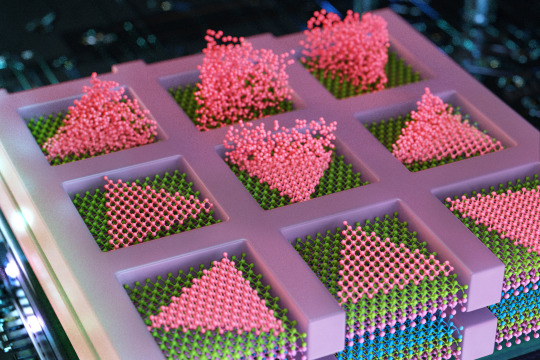

The electronics industry is approaching a limit to the number of transistors that can be packed onto the surface of a computer chip. So, chip manufacturers are looking to build up rather than out.
Instead of squeezing ever-smaller transistors onto a single surface, the industry is aiming to stack multiple surfaces of transistors and semiconducting elements — akin to turning a ranch house into a high-rise. Such multilayered chips could handle exponentially more data and carry out many more complex functions than today’s electronics.
A significant hurdle, however, is the platform on which chips are built. Today, bulky silicon wafers serve as the main scaffold on which high-quality, single-crystalline semiconducting elements are grown. Any stackable chip would have to include thick silicon “flooring” as part of each layer, slowing down any communication between functional semiconducting layers.
Now, MIT engineers have found a way around this hurdle, with a multilayered chip design that doesn’t require any silicon wafer substrates and works at temperatures low enough to preserve the underlying layer’s circuitry.
In a study appearing today in the journal Nature, the team reports using the new method to fabricate a multilayered chip with alternating layers of high-quality semiconducting material grown directly on top of each other.
The method enables engineers to build high-performance transistors and memory and logic elements on any random crystalline surface — not just on the bulky crystal scaffold of silicon wafers. Without these thick silicon substrates, multiple semiconducting layers can be in more direct contact, leading to better and faster communication and computation between layers, the researchers say.
The researchers envision that the method could be used to build AI hardware, in the form of stacked chips for laptops or wearable devices, that would be as fast and powerful as today’s supercomputers and could store huge amounts of data on par with physical data centers.
“This breakthrough opens up enormous potential for the semiconductor industry, allowing chips to be stacked without traditional limitations,” says study author Jeehwan Kim, associate professor of mechanical engineering at MIT. “This could lead to orders-of-magnitude improvements in computing power for applications in AI, logic, and memory.”
The study’s MIT co-authors include first author Ki Seok Kim, Seunghwan Seo, Doyoon Lee, Jung-El Ryu, Jekyung Kim, Jun Min Suh, June-chul Shin, Min-Kyu Song, Jin Feng, and Sangho Lee, along with collaborators from Samsung Advanced Institute of Technology, Sungkyunkwan University in South Korea, and the University of Texas at Dallas.
Seed pockets
In 2023, Kim’s group reported that they developed a method to grow high-quality semiconducting materials on amorphous surfaces, similar to the diverse topography of semiconducting circuitry on finished chips. The material that they grew was a type of 2D material known as transition-metal dichalcogenides, or TMDs, considered a promising successor to silicon for fabricating smaller, high-performance transistors. Such 2D materials can maintain their semiconducting properties even at scales as small as a single atom, whereas silicon’s performance sharply degrades.
In their previous work, the team grew TMDs on silicon wafers with amorphous coatings, as well as over existing TMDs. To encourage atoms to arrange themselves into high-quality single-crystalline form, rather than in random, polycrystalline disorder, Kim and his colleagues first covered a silicon wafer in a very thin film, or “mask” of silicon dioxide, which they patterned with tiny openings, or pockets. They then flowed a gas of atoms over the mask and found that atoms settled into the pockets as “seeds.” The pockets confined the seeds to grow in regular, single-crystalline patterns.
But at the time, the method only worked at around 900 degrees Celsius.
“You have to grow this single-crystalline material below 400 Celsius, otherwise the underlying circuitry is completely cooked and ruined,” Kim says. “So, our homework was, we had to do a similar technique at temperatures lower than 400 Celsius. If we could do that, the impact would be substantial.”
Building up
In their new work, Kim and his colleagues looked to fine-tune their method in order to grow single-crystalline 2D materials at temperatures low enough to preserve any underlying circuitry. They found a surprisingly simple solution in metallurgy — the science and craft of metal production. When metallurgists pour molten metal into a mold, the liquid slowly “nucleates,” or forms grains that grow and merge into a regularly patterned crystal that hardens into solid form. Metallurgists have found that this nucleation occurs most readily at the edges of a mold into which liquid metal is poured.
“It’s known that nucleating at the edges requires less energy — and heat,” Kim says. “So we borrowed this concept from metallurgy to utilize for future AI hardware.”
The team looked to grow single-crystalline TMDs on a silicon wafer that already has been fabricated with transistor circuitry. They first covered the circuitry with a mask of silicon dioxide, just as in their previous work. They then deposited “seeds” of TMD at the edges of each of the mask’s pockets and found that these edge seeds grew into single-crystalline material at temperatures as low as 380 degrees Celsius, compared to seeds that started growing in the center, away from the edges of each pocket, which required higher temperatures to form single-crystalline material.
Going a step further, the researchers used the new method to fabricate a multilayered chip with alternating layers of two different TMDs — molybdenum disulfide, a promising material candidate for fabricating n-type transistors; and tungsten diselenide, a material that has potential for being made into p-type transistors. Both p- and n-type transistors are the electronic building blocks for carrying out any logic operation. The team was able to grow both materials in single-crystalline form, directly on top of each other, without requiring any intermediate silicon wafers. Kim says the method will effectively double the density of a chip’s semiconducting elements, and particularly, metal-oxide semiconductor (CMOS), which is a basic building block of a modern logic circuitry.
“A product realized by our technique is not only a 3D logic chip but also 3D memory and their combinations,” Kim says. “With our growth-based monolithic 3D method, you could grow tens to hundreds of logic and memory layers, right on top of each other, and they would be able to communicate very well.”
“Conventional 3D chips have been fabricated with silicon wafers in-between, by drilling holes through the wafer — a process which limits the number of stacked layers, vertical alignment resolution, and yields,” first author Kiseok Kim adds. “Our growth-based method addresses all of those issues at once.”
To commercialize their stackable chip design further, Kim has recently spun off a company, FS2 (Future Semiconductor 2D materials).
“We so far show a concept at a small-scale device arrays,” he says. “The next step is scaling up to show professional AI chip operation.”
This research is supported, in part, by Samsung Advanced Institute of Technology and the U.S. Air Force Office of Scientific Research.
#2-D#2023#2D materials#3d#ai#AI chip#air#air force#applications#Arrays#Artificial Intelligence#atom#atoms#author#Building#chip#Chip Design#chips#coatings#communication#computation#computer#computer chips#computing#craft#crystal#crystalline#data#Data Centers#Design
2 notes
·
View notes
Text
Headcanons:
Andrew Minyard
Andrew’s favorite color is not black. It’s blue/green but he never told anyone and let the assumption grow because in his mind, even that small amount of happiness would be taken if he admitted it.
I think the reason Andrew is so protective of Aaron isn’t just because he is his brother and he couldn’t protect him but also that his definition of brother differs from the normal. He sees it as “Protect. Save. Take care of.” And since he didn’t have any stable and emotionally available role models for those kinds of relationships, he is using what he knows to accomplish those meanings.
^ The deal he made with Aaron was NOT to control him but to ensure he isn’t taken advantage of by friends because his history of abuse. If he doesn’t have friends, he can’t be taken advantage of.
^^ The issue Aaron had with Katelyn stemmed specifically from their mother. Since Aaron was abused by her most of his childhood, he was afraid they’d get into the exact same relationship but romantically and we know how Andrew reacts when he’s afraid.
When Neil becomes team captain, he and Andrew kinda take in the newer classes’ Exy players. Neil is the protective and sometimes unhinged silly father while Andrew is the caring but emotionally unavailable one.
^ I also think one of the younger class’ players would get back to the dorm late and he would be standing right inside the door scaring the shit out of them deadpanning a “where’ve you been?”
^^ He also enforces that all triggers for the team be averted during practice and casual hang outs for everyone. (He threw a sandal at one of them that he pulled directly from his foot during movie night once after someone made a joke that had a “not normal” trigger in it for one of the other team mates)
Andrew is very specific about his ice cream texture. He likes all sweets for the most part but his ice cream has to be a specific texture.
^ He HATES carnival peanuts and orange slices (the candy). The texture is not a vibe and he would rather stab himself SEVERAL times.
He loves sudoko, puzzles, and logic games. His favorite are 3d puzzles that you stack the pieces to make. He had a lot of every puzzle and logic puzzle and how long it took him to beat or do it successfully.
^ Those metal fidget puzzles? He has HUNDREDS.
^^ He gives one to Neil every so often and would watch him try and figure it out. If Neil didn’t get it and asked, he’d explain. If Neil did get it, it was usually within minutes and he’d sit it in front of Andrew with a triumphant cocky grin.
His first mention of anything Drake did to him was actually in a fit of anger when Nicky got really depressed with guilt about thanksgiving.
(If he had a modern phone) His phone passcode is the day Nicky got custody. When he and Neil became dating “but not dating”, he changed it to the day he hit him with an Exy racquet.
^ When asked he’d say “the first time I took Neil’s breath away” and everyone assumed he meant the first time they fucked or something and not question it anymore. Kevin would be the only one to know but he wasn’t gonna mention he remembered that day.
His favorite animal is a deer. He likes how elegant looking does look and feels a sense of connection with him since he technically was one (by temporary last name).
His favorite number is 88. I have no reason. It just is.
He does art sometimes because Bee suggested an outlet and since he has eidetic memory, he’s able to draw pretty realistic things.
^ He keeps these locked in a desk. Nobody knows even Neil. (Who one day accidentally stumbles upon a loose drawing Andrew forgot to put up of a bird- drawn because he was stressed and wanted to leave. When he asked Andrew who drew it for him, he said he did. Neil has a new binder that is full of drawings Andrew did.)
Andrew gets a Medusa tattoo on either his shoulder blade or forearm. He’s grateful the artist didn’t ask him if he knew the meaning and left a large tip for just that with no explanation. Explanation for the tattoo, not needed.
^ He’d keep it simple and put Medusa’s head (or a graphic of it) inside a circle or some other shape because he likes to signify it’s a part of him but it’s encased in the past and he can’t change it.
He thinks about the stupid shit he laughed at and/or said while medicated and cringe sometimes. (“bee being bee”)
He is actually good at debates. Especially if he does his research on it first and will tear apart anyone he debates ANYTHING with.
^ The DEFINITION of “if I talk long enough, I can make anything right or wrong”
He doesn’t associate with Christianity or Christians but he does grow a sense of spirituality after college. He thinks that nature and sacrifice is worth appreciating and honor and although he doesn’t have a set religion or practices, he goes out for walks in the woods often and sits there sometimes to just thank nature for remaining pure and I corrupt like humanity.
^ (-kinda) After college, he starts meditating. Not like an internal analysis thing but he’d imagine his breathing being the world around him and he’d use this to relax and be calm for a while and to escape his life.
He isn’t one of Bee’s clients after college, but they still have calls where Andrew can use her as a therapist if he needs. If not, it’s just a catch up call on life.
He gets better but not in a “I don’t deal with that anymore” way but a “I deal with that every second of every day and I am this close 🤏 to stabbing everyone in the room so I am leaving (and going to mediate or stab a brick if Neil doesn’t give me something to focus on).” (He learns what tells his body gives him and what he needs to do to fix the issue based on the level of those tells.)
He had a journal that is locked in a locked box in a safe (with Neil’s art binder ) and he uses this to right down things he notices when he’s trying to figure out someone’s motives or way of thinking and has EXCEPTIONAL pattern recognition so he’d get it done pretty quick.
He gets a psychiatrist service animal.
^ He gets a dog because he decided that Sir and King are emotional support animals not his service animals because they are older and would be harder to train. He also wanted to differentiate between his psa and animals that benefit both him and Neil.
^^ His psa is trained for panic attacks, dissociating, anger management, and other things. His psa will help Neil out sometimes as well but knows his job is to take care of Andrew because Neil HAS Andrew.
^^^ Andrew got the psa because he doesn’t want to burden Neil with EVERYTHING. Or become co-dependent.
^^^^ He gets a stereotypically “aggressive breed” of dog for a psa. (Pit Bull, Boxers, etc)
I have so many more. Someone please send help. I need just one (ONE! - 1 singular day without thinking of this man)
#say you’re and Andrew Minyard kin without saying your an Andrew Minyard kin#all for the game#Andrew Minyard#Neil Josten#Kevin day#nicky hemmick#andrew Minyard headcanons
23 notes
·
View notes
Text
okay so I need to just. post weekly about my DRV3 replay to hold myself accountable to some progress otherwise it's going to take forever to get through it again
hello drv3 tag, I am doing a replay. I'm only through the prologue and just into chapter 1. some notable events thus far
the pre-prologue ... prologue? where the cast is their "pre-game" selves is such a bizarre choice of scene. I replayed it several times and I'm still unsure why it's there. the simple answer is that it exists only to cast doubt on Tsumugi's version of events in chapter 6, but that explanation doesn't quite satisfy me
the flashback lights were introduced. a device that can alter memories. with no clear rules or in-universe limitations. I don't recall an additive explanation on those points later. that's fine. I'm sure my memory of DRV3 is wrong and Kodaka didn't just blow up his setting like a teenager behind the wheel in an action movie car chase
Kokichi has been in 3 scenes so far. the only one in which he didn't directly contradict himself is in the pre-prologue. he had the opportunity! he had *2* lines! but they were both questions
oh and I got to sight-see around my new prison-school
I saw this dragon
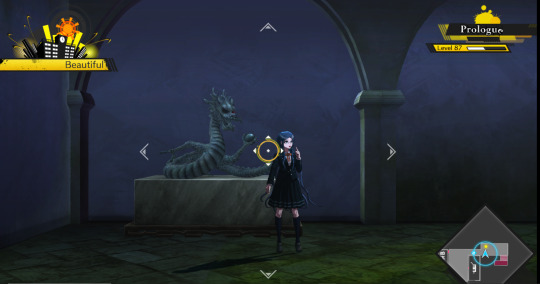
Tsumugi and Kaede alleged it was floating. they in fact had this exchange
Tsumugi: Ah…that bronze dragon statue over there. I’m just plain curious about it. Tsumugi: It almost seems like it’s floating, right? Doesn’t it look pretty out of place? Kaede: Now that you mention it…you’re right. It sorta bothers me, too.
they did not elaborate. I have no idea what they mean. I walked around the thing to get a view from every conceivable angle. it doesn't appear to be floating - not between the dragon and it's slab, or the slab and the floor
sure, from certain angles, you could argue that between the slab and the floor, it KIND OF appears to be floating due to perspective and a lack of occlusion or cast shadow. but if I swivel a couple degrees there is a tree made of a flat texture with no shadow in a 3D space, so I'm not sure I'd make the argument that that is intentional

and I saw these stairs!
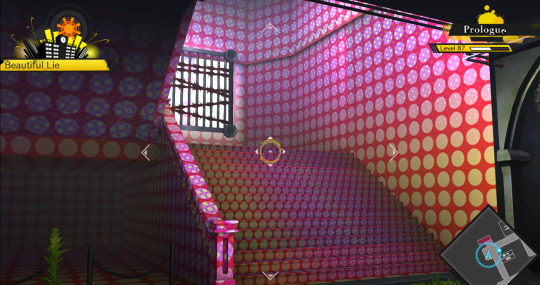
this pink pattern on first-to-second floor stairs resembles a temporary texture file. last I checked in with the game dev scene, because of how textures are added atop 3D models, it was practical to utilize a generic repeating pattern before doing any committal custom texture work for an object's final appearance. otherwise you might get unseemly tiling or seams
there are two other objects accessible within the prologue that have this pattern as well: the stairs to the basement and gate-style door between the main area of the first floor and the gym. so although you could, I personally wouldn't make the argument these are "un"intentional "missed" textures
filing this one under: 'devs wanted to give you the option to believe in virtual reality', 'possible pranks by in-universe Team Danganronpa', and 'one of the monokubs has really bizarre taste in wallpaper'
these cursed lockers are outside the gym
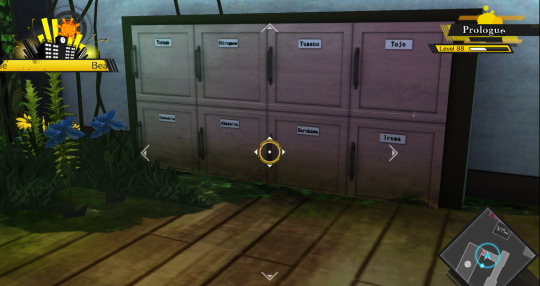
there is a double-stack of boys lockers and girls lockers to each side of the door. I say they're cursed because they're ... completely disorganized. they don't appear to be in any kind of sensible arrangement and WORSE. they don't even match the dormitory room assignment order
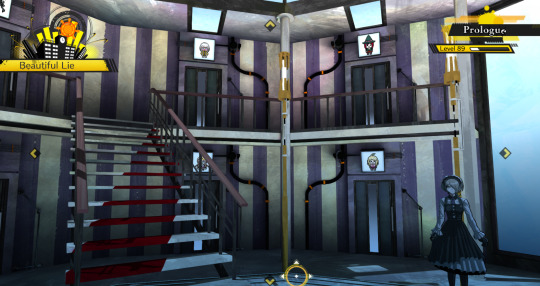
I think this fully justifies any murder committed by housekeeping tbh
also these photos!
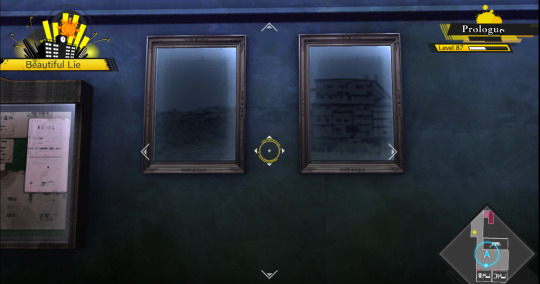
there is a whole series of these babies in the prologue's opened areas. there are 18 total. 12 of them being in 4 sets of 3 down the hallway to the left after coming down the stairs from the second floor. these appear to be actual photos with some filters thrown on top
they are hard to make out, but they appear to be nondescript fields, mountains, seas and buildings. considering them all together makes me think of an island, but beyond that, I'm unsure of their purpose
I like these ones adjacent to Kaede's ultimate research lab. doesn't the one to the right look like a smug little creature
(≖ᴗ≖ ✿)
speaking of islands
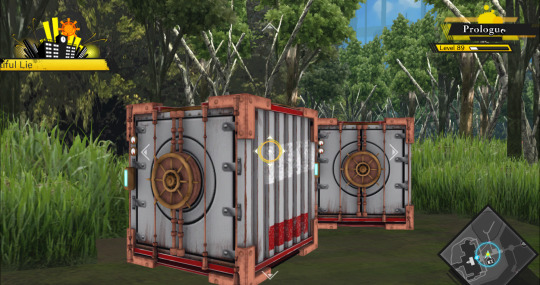
if it's been a while since you've played DRV3, you may not remember that the school was still being built during the prologue by Monokuma and the monokubs. these steel boxes appear to be storage containers for the construction
they evoke both an outer-space and nautical theme with the pressure gauges and handles that resemble ship helms
and speaking of building the school

in the prologue, arguably the third and fourth floors are not yet constructed and absolutely the clock tower is non-existent
the clock tower where, y'know, Kaito's lab was located and everyone burst out of cryogenic chambers or something to start their new life in space. according to sources. sources in chapter 5
I don't think there is a single clock, person, or mechanical bear-shaped entity in this game that is tracking time correctly
and. uh. this??? th s
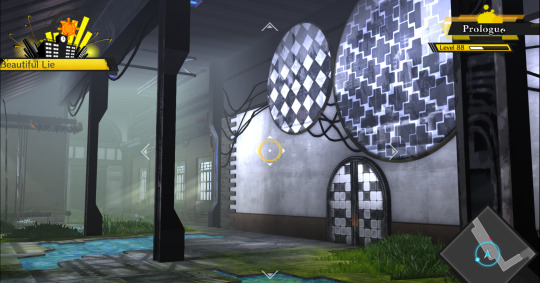
I'm pretty sure this door opens up in chapter 5 to Kaito's lab, but the more I gaze upon its' visage. the more I. the more I just
?????
??????????
#danganronpa v3#drv3#wisterias dot text#my replay#next week I'll post something shorter but I WILL post something
6 notes
·
View notes